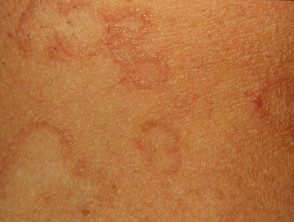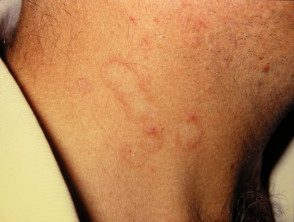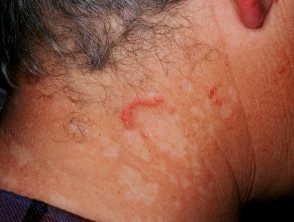What is actinic? granuloma?
Actinic granuloma is a rare skin disease that presents with asymptomatic cancel (ring-shaped) plates in places exposed to the sun.
It occurs most often in light-skinned, middle-aged women who live in sunny climates. There is a debate about whether it is a different entity or a variant of granuloma annulare.
It is also known as O'Brien granuloma after the doctor who first described it.
Actinic granuloma

Actinic granuloma

Actinic granuloma

Actinic granuloma
What is the cause of actinic granuloma?
Actinic granuloma is believed to be inflammatory response to sun damage, possibly to injuries elastic fibers. White blood cells known as Helper T-lymphocytes are predominantly involved.
What are the clinical characteristics of actinic granuloma?
Actinic granuloma begins as flesh-colored or pink papules (small bumps) that fusion in annular plates (larger thick patches) ranging in size from 1 to 10 cm in diameter. The plaques typically have raised red edges and a slightly thinned pale central area.
The lesions usually produce no symptoms, but when exposed to the skin they can become red and uncomfortable.
How is actinic granuloma diagnosed?
The clinical diagnosis of actinic granuloma is suspected when there is an annular dermal license plate on the sun exposed skin. The diagnosis is often compatible with the typical histopathological features on the skin biopsy.
Differential diagnosis actinic granuloma
Actinic granuloma is difficult to distinguish from others granulomatous disorders, particularly granuloma annulare and necrobiosis lipoidica
What is the treatment of actinic granuloma?
Sun protection is important to reduce the chance of further injury.
Treating actinic granuloma can be difficult. Infiltration of corticosteroids in the elevated border, phototherapy and antimalarials are largely ineffective.
Isotretinoin and acitretin have been used with varying success, and there are case reports of success with cyclosporine.

